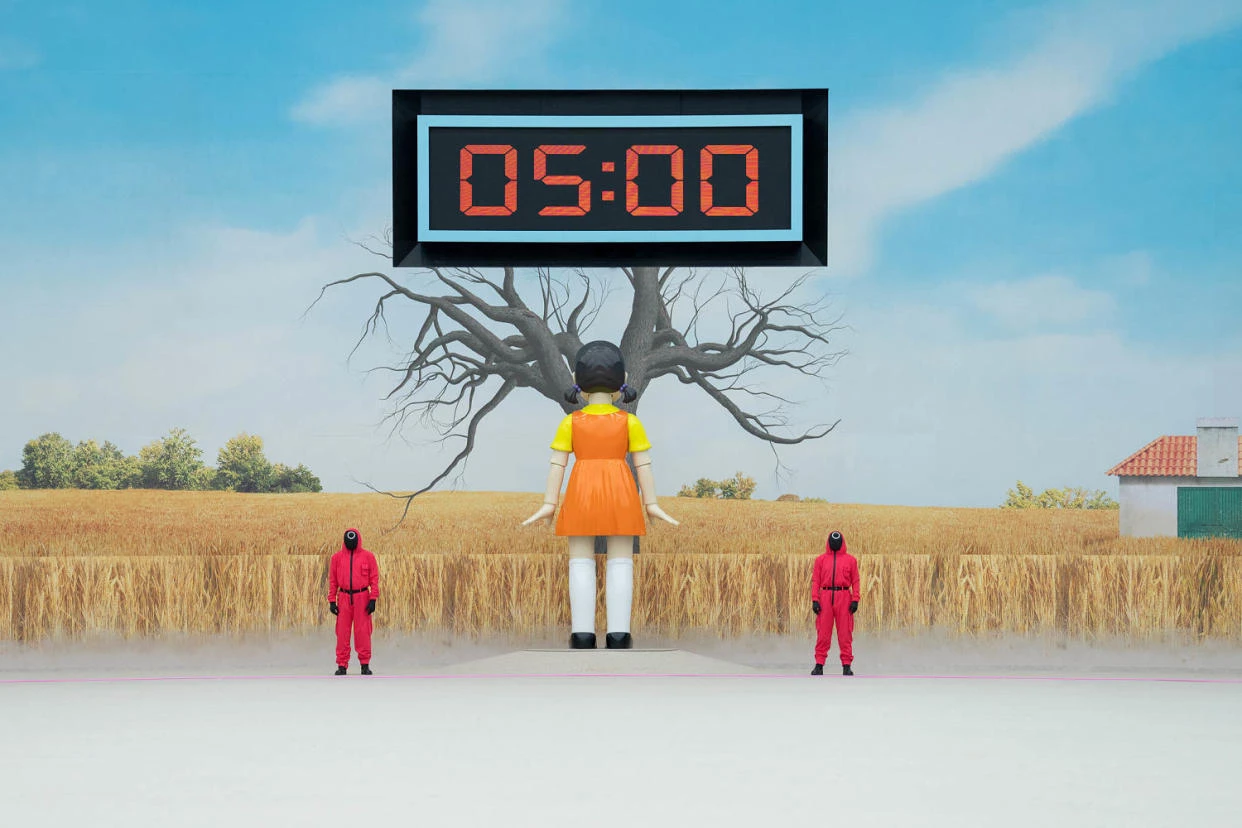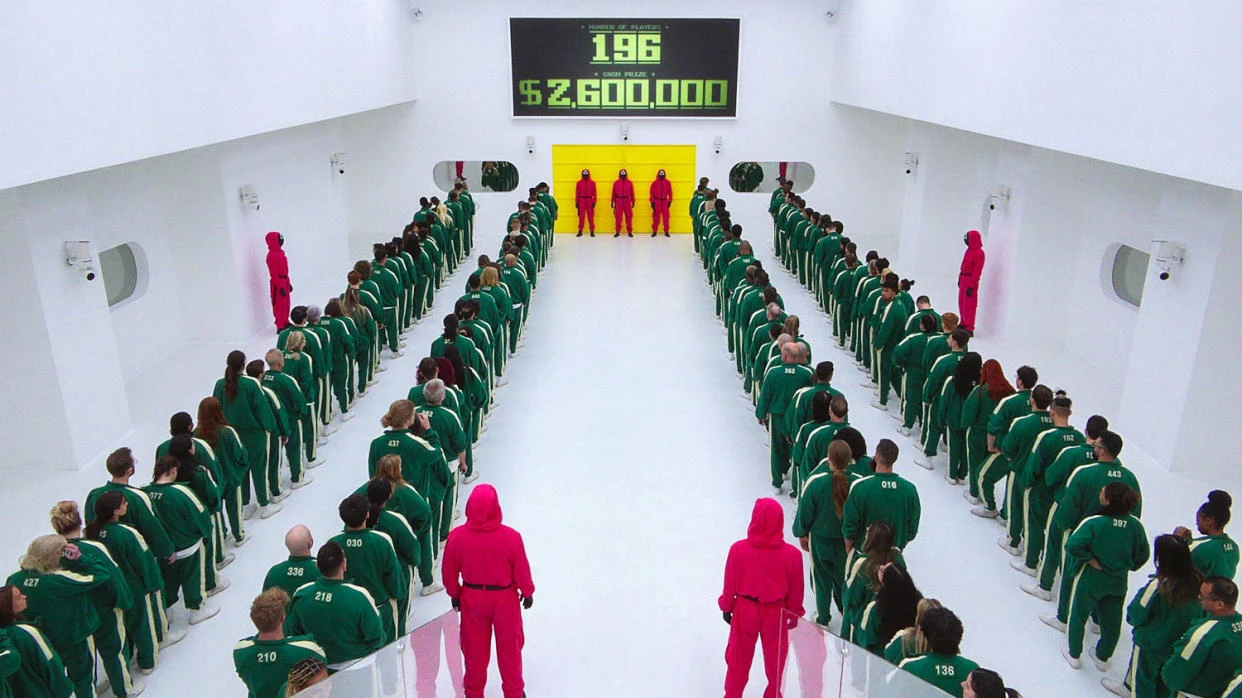Following the success of the 2021 "Squid Game", fans of the series can hide their expectation from the "Squid Game: The Challenge," where 456 players vie for a jaw-dropping $4.56 million prize. The curtain lifts with a giant robot doll and the iconic Red Light and Green Light, setting the stage for a rollercoaster of emotions. But why did some become stars while others faded into obscurity?
Executive producers Stephen Lambert and John Hay reveal the backstage chaos, proving that they broke all the rules to deliver an unscripted spectacle unlike any other. Get ready to experience an unpredictable thrill as we uncover the non-traditional techniques that give the characters and games life.
#1. The Casting Problem: Breaking The Mold
 Source: COURTESY OF NETFLIX © 2023
Source: COURTESY OF NETFLIX © 2023
In a world where unscripted shows thrive on a modest cast, 'Squid Game: The Challenge' threw caution to the wind with a whopping 456 players. Lambert confesses, “We broke all the rules. You're not meant to have more than 20 players if you want to make a good unscripted show. We had 456. So, I mean, that was an enormous challenge."
With characters constantly exiting the game, the producers faced a dilemma: how to showcase contestants effectively. Enter the "processing room," a therapeutic space where players spill their pre-game hopes and dreams.
Lambert shares, “Everything about the show was on a different scale to anything any of us had done before. So all we could really do was watch the action, see who’s put themselves forward, see who emerged, see who had interesting relationships (and) cover as many people as we could.”
This unconventional approach not only introduced characters but also ensured a constant influx of fresh faces, adding a layer of unpredictability to the narrative.
#2. Tests Of Character: Explaining The Drama
 Source: COURTESY OF NETFLIX © 2023
Source: COURTESY OF NETFLIX © 2023
'Squid Game: The Challenge' shatters norms by introducing "tests of character" in a reality setting. In contrast to scripted television, where decisions are made based on the plot, this unconventional method puts competitors in moral binds.
Hay explains, “The thinking behind all of those tests was that in the scripted show, the script is obviously doing a lot of the work of appointing people off or leading you through those moments of choices about trust, betrayal, and moral choices. And if we just did the big games, we wouldn’t necessarily get those dynamics." So, the team created “tests of character” to reveal more about the contestants’ varying strategies and loyalties.
The randomness of these character tests, from individual challenges to dorm-wide games, adds a dynamic element to the hot show. Episode Three surprises contestants with "Warships," a strategic twist on the original tug of war.
Lambert emphasizes the importance of childhood games, saying, "We wanted to give viewers the classic games of the drama, which everybody loved, but we also needed to come up with some surprises." The result? A visual spectacle that not only evokes nostalgia but also pushes players to emerge as leaders and form alliances.
#3. The Unseen Challenges: Navigating The Unpredictable
As the series progresses, 'Squid Game: The Challenge' promises more unexpected challenges and dorm games. Lambert teases, "We also needed to come up with some surprises." The introduction of group votes, special tasks, and unpredictable elements keeps contestants on their toes even when not in the spotlight. The team aims to capture the essence of childhood games while adding fresh twists to keep viewers hooked.
With the next batch of episodes set to arrive on Nov. 29, audiences can anticipate more riveting moments and strategic gameplay that defy traditional reality show conventions.
In the enthralling world of 'Squid Game: The Challenge,' breaking the rules isn't just a choice—it's the essence of the game. As the drama unfolds, expect the unexpected, because, in this reality, unpredictability reigns supreme.